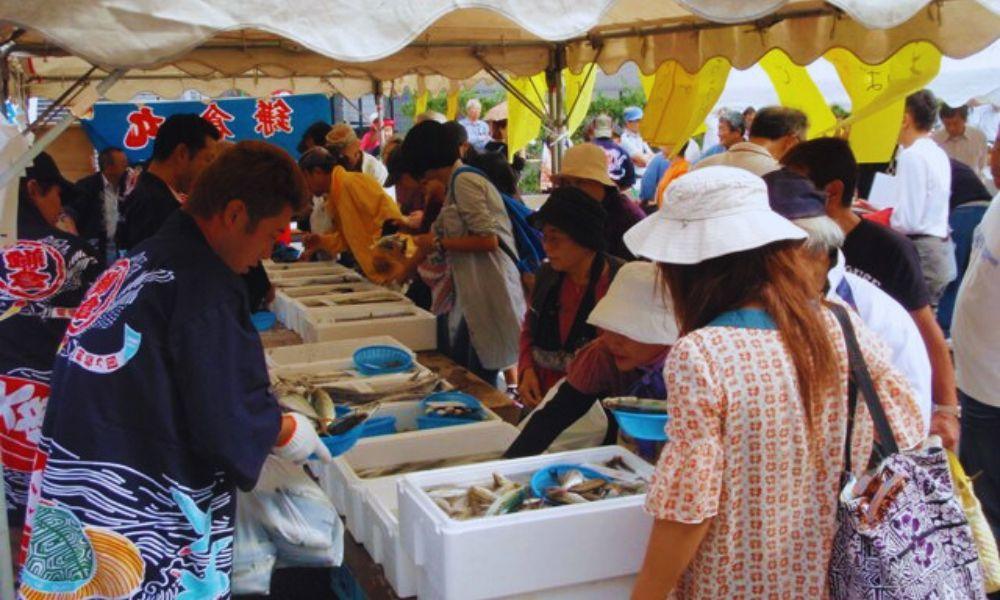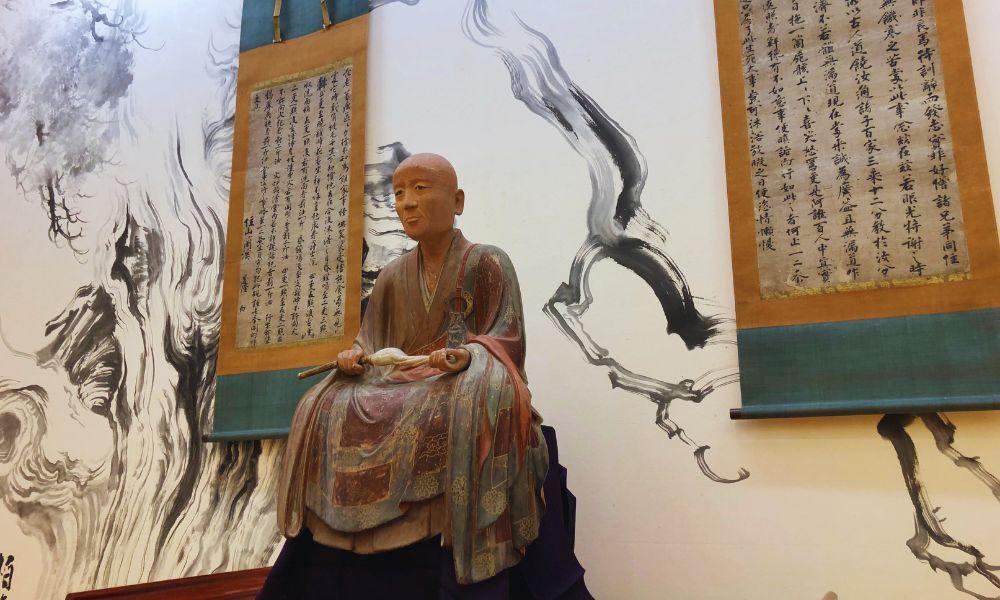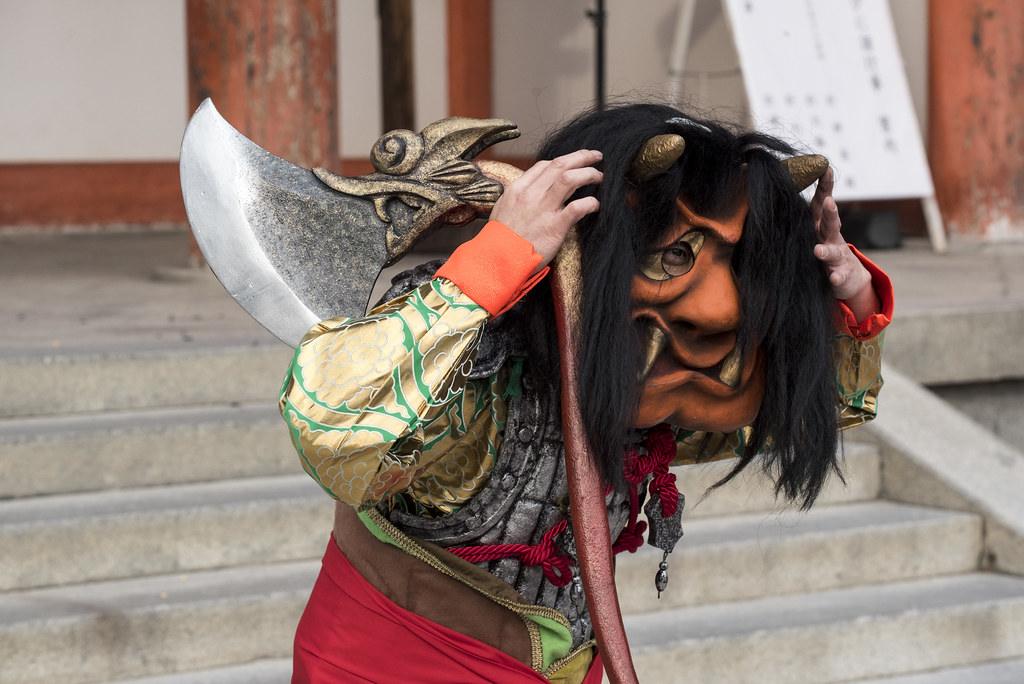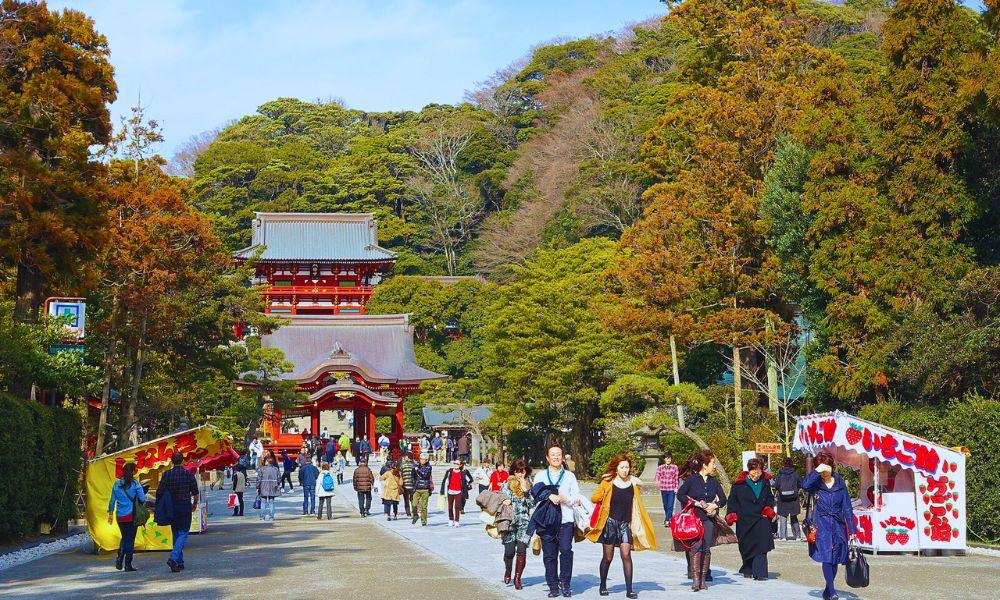Ever wanted to step back in time? Kamakura is that kind of place—a historic city full of incredible temples and shrines, all surrounded by beautiful mountains and the sparkling ocean. It’s a city that feels alive with history, and the best way to experience it is through its festivals! These aren’t just one-off events; they’re traditions that have been celebrated for hundreds of years.
Want all the events in one place with direct links to Google Maps locations and official websites? Get our comprehensive guide for just $1.
This guide is your personal tour through the heart of Kamakura’s culture. We’re going to walk through the entire year, month by month, to show you all the amazing events happening here. Think of it as your ultimate Kamakura festival guide to help you plan your trip and make sure you don’t miss out on any of the best Kamakura seasonal events.
Spring Festivals in Kamakura
Spring in Kamakura is a truly magical time. The city wakes up with blooming flowers and a vibrant energy that makes every festival feel extra special.
March
As the weather starts to warm up, keep your eye on the cherry blossoms!
観桜会 (Kan’ōkai – Cherry Blossom Viewing)
When: Towards the end of March, timed with cherry blossom season.
Where: Kōmyō-ji Temple.
What to Expect: This event is a rare chance to see the temple’s impressive main gate opened to the public, just as the cherry blossoms are at their peak. Imagine walking through a grand entrance framed by soft pink petals! While you’re there, you can also see some of the temple’s precious treasures on special display, giving you a glimpse into its long and rich history.
For an even more immersive experience, you might get to enjoy a traditional matcha tea ceremony, sipping green tea in a serene setting, or try your hand at smelling fragrant incense. It’s a peaceful and beautiful way to enjoy spring.
Tips: Check local cherry blossom forecasts closer to your travel date for peak bloom. Arrive early for the best views and to avoid crowds.
April
April is when Kamakura really comes alive with celebrations. The most famous is the Kamakura Matsuri, a huge week-long festival with events happening all over the city, especially at Tsurugaoka Hachimangu Shrine. It’s a key event that lets you feel like you’ve been transported back to the days of samurai.
鎌倉まつり (Kamakura Matsuri)
When: Second to third Sunday of April (week-long).
Where: Tsurugaoka Hachimangu Shrine and other locations around Kamakura.
What to Expect: This is a big one! It’s a vibrant celebration of Kamakura’s history and samurai spirit. While it features many different events throughout the week, one of the highlights is the Shizuka no Mai dance. This beautiful, traditional performance honors Lady Shizuka, a famous figure from Japanese history, and is a very graceful and moving part of the festival. You might also see impressive horseback archery (Yabusame) performances, where archers shoot targets while galloping on horseback – a true display of samurai skill! The atmosphere is lively, with many people dressed in traditional attire.
Tips: Events are spread out, so check the specific schedule for what you want to see. The main events at Tsurugaoka Hachimangu can get very crowded, so arrive early for a good viewing spot, especially for the Shizuka no Mai or Yabusame. Wear comfortable shoes as you’ll be doing a lot of walking.
極楽寺特別拝観 (Gokuraku-ji Tokubetsu Haikan – Gokuraku-ji Temple Special Viewing)
When: April 7th and 8th.
Where: Gokuraku-ji Temple.
What to Expect: This temple offers a rare special viewing of its hidden treasures. You’ll get to see the standing statue of Shaka Nyorai, which is so important it’s considered a national cultural property. You can also see the stupa for Priest Ninshō, offering a rare peek into the temple’s long history and spiritual significance. It’s a unique opportunity to see artifacts not usually on public display.
Tips: This is a limited-time event, so plan your visit specifically for these dates if you want to see these treasures.
花祭り (Hana Matsuri – Flower Festival)
When: April 8th.
Where: Kencho-ji Temple.
What to Expect: Kencho-ji Temple holds a lovely Buddhist service to celebrate the birthday of the Buddha. During this ceremony, you can join in the tradition of pouring sweet tea and aromatic water over a statue of the newborn Buddha. It’s a gentle, beautiful event that’s perfect for the spring season, symbolizing purity and new beginnings. The temple grounds are usually beautiful with spring blooms around this time.
Tips: This is a peaceful event, great for those looking for a quieter cultural experience.
May
As spring reaches its peak, May is a month of significant and historic celebrations, particularly at some of Kamakura’s most important temples and shrines.
菖蒲祭 (Shōbu-sai – Iris Festival)
When: May 5th.
Where: Tsurugaoka Hachimangu Shrine.
What to Expect: This ceremony is held for Tango no Sekku—what we know as Children’s Day in Japan. It’s a traditional event with roots dating back to the Heian period, where the iris flower was believed to ward off evil spirits. Shinto rituals are performed at the Maidono (a special dancing stage), and ancient court music and dance, known as Gagaku, are performed and offered to the deities. It’s a very elegant and traditional sight to see, showcasing classical Japanese performing arts.
Tips: This event is particularly popular with families celebrating Children’s Day. The Maidono can get crowded, so arrive early for a good view of the performances.
開山忌 (Kaisan-ki – Founder’s Memorial Day)
When: May 23rd and 24th.
Where: Kencho-ji Temple.
What to Expect: Kencho-ji Temple holds a memorial service for its founder, a Chinese Zen monk named Rankei Doryu (also known as Daikaku Zenji). This solemn and important ceremony honors the temple’s rich history and the man who established it. You can observe monks performing traditional Buddhist rites, offering a deep insight into Zen practices and the temple’s spiritual roots.
Tips: This is a more solemn and spiritual event. Visitors are encouraged to observe quietly and respectfully.
In Japan this spring? Be sure to drop by one of the many flower festivals:
Summer Events in Kamakura
Summer in Kamakura is a time of vibrant life, from serene firefly ceremonies to explosive fireworks over the ocean. It’s the perfect season to enjoy the city’s beautiful coastline and warm evenings.
June
June is a month of beautiful traditions as the city celebrates the arrival of summer.
蛍放生会 (Hotaru Hōjōe – Firefly Releasing Ceremony)
When: Early June.
Where: Tsurugaoka Hachimangu Shrine.
What to Expect: You can experience a truly enchanting event here. Fireflies, symbolizing purity and the fleeting beauty of life, are released into the night. These fireflies are often raised in the temple’s Yanagihara pond and offered to the gods. To top it off, shrine maidens perform a graceful dance, making for a truly magical and memorable evening as the fireflies flicker in the twilight.
Tips: This is a nighttime event. Arrive before sunset to find a good spot. Be mindful of others and keep noise to a minimum to fully appreciate the serene atmosphere.
大祓 (Ōharae – Great Purification)
When: June 30th.
Where: Tsurugaoka Hachimangu Shrine.
What to Expect: This ceremony is held to cleanse and purify sins and impurities that have built up over the first half of the year. It’s a significant Shinto ritual. During this ritual, participants walk through a large ring made of miscanthus reeds, known as Chinowa Kuguri, symbolizing a fresh start and purification. It’s a wonderful way to experience a traditional spiritual custom and feel refreshed.
Tips: You can participate in the Chinowa Kuguri by walking through the large reed ring. Follow the directions (usually a figure-eight pattern) for the purification ritual.
July
As the temperature rises, so does the excitement. July is famous for one of Kamakura’s most spectacular events.
鎌倉花火大会 (Kamakura Hanabi Taikai – Kamakura Fireworks Festival)
When: Early July.
Where: Yuigahama Beach and Zaimokuza Beach.
What to Expect: This is a summer highlight you won’t want to miss! While you can see dazzling fireworks lighting up the night sky, the real showstopper is the “underwater fireworks.” These are fireworks that are set off just below the surface of the water, creating a magnificent semi-circle of light that bursts powerfully from the sea. It’s a truly unique display that reflects beautifully on the ocean. The beaches get very lively with people enjoying the show.
Tips: This festival draws huge crowds. Arrive very early (hours before sunset) to secure a good spot on the beach. Bring a blanket or mat to sit on, and snacks and drinks. Public transport will be crowded, so plan your route.
観蓮会 (Kanren-e – Lotus Viewing)
When: A weekend in late July.
Where: Kōmyō-ji Temple.
What to Expect: For a more peaceful summer experience, the temple hosts an event to celebrate its beautiful lotus flowers. Lotuses are sacred in Buddhism and bloom beautifully in summer. You can listen to performances of traditional Japanese instruments, creating a tranquil ambiance, and enjoy a tea ceremony while surrounded by the serene atmosphere of the blooming lotuses. A special touch is the paper lantern ceremony, where lanterns are lit to create a beautiful, tranquil scene as evening falls.
Tips: Lotuses typically open in the morning, so visiting earlier in the day might offer the best views of the blooms.
August
August brings one of Kamakura’s most visually stunning events, along with other important ceremonial days.
ぼんぼり祭 (Bonbori Matsuri – Lantern Festival)
When: From the day before the start of autumn until August 9th.
Where: Tsurugaoka Hachimangu Shrine.
What to Expect: This is a breathtaking festival. The approach to the shrine is decorated with hundreds of bonbori (paper lanterns), each featuring beautiful calligraphy and paintings by famous people with ties to Kamakura. It’s an incredible sight to see as the lanterns light up the path at night, creating a magical atmosphere. During this period, the shrine also holds ceremonies for the start of autumn and other important rituals. It’s a truly photogenic event.
Tips: Visit in the evening to see the lanterns illuminated. The shrine grounds can get crowded, but the wide approach (Dankazura) offers good viewing opportunities.
黒地蔵縁日 (Kurojizo Ennichi – Black Jizo Festival Day)
When: August 10th.
Where: Kakuen-ji Temple.
What to Expect: This is a very quiet and spiritual event where sutras are recited from around midnight until noon. It’s a solemn Buddhist service, offering a glimpse into monastic life and prayer.
Tips: This is a more introspective event, best for those seeking a quiet, spiritual experience. Observe respectfully.
鎌倉宮例大祭 (Kamakura-gu Reitaisai – Kamakura-gu Shrine Grand Festival)
When: August 19th to 21st.
Where: Kamakura-gu Shrine.
What to Expect: This is the most important festival at Kamakura-gu Shrine. It honors Prince Morinaga, who is enshrined there, marking the day he is said to have passed away. You can witness various Shinto rituals and ceremonies, offering a deep insight into the shrine’s history and its connection to the imperial family.
Tips: Check the shrine’s specific schedule for performance times if you wish to see particular rituals.
Autumn Festivals in Kamakura
As the seasons change and the leaves begin to turn, Kamakura becomes even more picturesque. Autumn is a time for harvest, reflection, and some of the city’s most unique cultural events.
September
September brings more historical and traditional celebrations.
例大祭 (Reitaisai – Grand Festival)
When: September 14th to 16th.
Where: Tsurugaoka Hachimangu Shrine.
What to Expect: This festival has roots dating all the way back to 1187, started by Minamoto no Yoritomo, the founder of the Kamakura Shogunate, as a Hojoe (a ritual of releasing captive animals). It’s a vibrant three-day event featuring various traditional rituals and performances, including mikoshi (portable shrines) being carried, a tea-offering ceremony to the gods, and traditional dances. It’s a wonderful way to connect with the city’s deep history and see a grand Shinto festival.
Tips: This is a major festival. Check the daily schedule for specific events like the mikoshi parade or performances.
面掛行列 (Menkake Gyoretsu – Masked Procession)
When: September 18th.
Where: Goryo-jinja Shrine.
What to Expect: You can see a very rare and fascinating procession here. First, a special dance called Kamakura Kagura is performed to pray for a good harvest. Then, a group of people wearing theatrical masks, known as dengaku, parade through the streets. These masks are unique and represent various characters, making for a truly unique sight you won’t find just anywhere. It’s a lively and colorful display of local folk tradition.
Tips: This is a local festival, so it might be less crowded than the major shrine events, offering a more intimate cultural experience.
October
October offers a chance to explore a different side of Kamakura.
鎌倉漁港魚まつり (Kamakura Gyokō Sakana Matsuri – Kamakura Fishing Port Fish Festival)
When: Early October.
Where: Sakanoshita (Kamakura Fishing Port).
What to Expect: Head down to Sakanoshita for this lively event, organized by the local fishery cooperative. This festival is known for its morning market where you can find delicious local fish caught right in the area, as well as fresh Kamakura vegetables. It’s a fantastic opportunity to taste local seafood, interact with fishermen, and experience a vibrant community event.
Tips: Arrive early for the best selection of fresh seafood! Bring cash, as not all stalls may accept cards.
November
November is all about enjoying the beautiful colors of autumn and seeing some of the city’s incredible treasures.
宝物風入 (Hōmotsu Kazeire – Treasure Airing)
When: Around November 3rd.
Where: Kencho-ji Temple.
What to Expect: This temple holds a special event to air out its valuable treasures, a traditional practice to preserve them. To coincide with this, they put many of their national treasures and other important cultural properties on display for the public. It’s a fantastic chance to see artifacts that are usually kept away, offering a rare glimpse into the temple’s historical collection.
Tips: This is a unique cultural event for history and art enthusiasts. Check specific display times.
紅葉ライトアップ (Kōyō Light-up – Autumn Leaves Illumination)
When: Late November through mid-December.
Where: Hasedera Temple.
What to Expect: Hasedera Temple illuminates its grounds with a fantastical light-up. This is your chance to see the temple’s stunning autumn leaves glowing in the dark, creating a magical and romantic atmosphere. They even extend their hours for a special nighttime viewing, allowing you to enjoy the illuminated beauty after dark.
Tips: This is a very popular event. Expect crowds, especially on weekends. Go in the early evening to see both the daytime colors and the illumination.
湘南の宝石 (Shōnan no Hōseki – Jewels of Shōnan)
When: Late November until February.
Where: Enoshima Island and Katase Coast (nearby).
What to Expect: If you’re willing to venture a little further, this brilliant illumination event is centered around the Enoshima Samuel Cocking Garden. It’s a dazzling display of lights and a perfect evening activity, transforming the island into a winter wonderland. It’s a great option if you’re staying in the Kamakura area and want to see more festive lights.
Tips: Combine this with a visit to Enoshima Island itself. Dress warmly, as it can get chilly by the coast at night.
Winter Events in Kamakura
Even in the cooler months, Kamakura is bustling with tradition. This season is all about looking back on the year, preparing for a new one, and celebrating with ancient rituals.
December
December is a month of winding down and getting ready for the New Year. You can feel the festive spirit as the city prepares for a fresh start.
御鎮座記念祭 (Gochinza Kinen-sai – Relocation Memorial Festival)
When: December 16th.
Where: Tsurugaoka Hachimangu Shrine.
What to Expect: This festival commemorates the day its main hall was relocated to its present location during the Kamakura period. It’s a special ceremony where sacred music and dance, known as Kagura, are performed. This traditional performance is a beautiful and solemn offering to the deities.
Tips: This is a significant shrine event, offering a glimpse into traditional Shinto practices.
歳の市 (Toshi no Ichi – Year-end Market)
When: December 18th.
Where: Approach to Hasedera Temple.
What to Expect: Head to this bustling market to experience local culture and get into the New Year’s spirit. Vendors sell lucky charms for the coming year, such as daruma dolls (round, hollow dolls that symbolize perseverance) and traditional rakes decorated with symbols of good fortune. It’s a lively atmosphere perfect for souvenir hunting and soaking in the local preparations for the New Year.
Tips: This is a great place to buy unique Japanese souvenirs and experience a traditional market.
大祓 (Ōharae – Great Purification)
When: December 31st (New Year’s Eve).
Where: Tsurugaoka Hachimangu Shrine.
What to Expect: Just like in June, this ritual is meant to cleanse away any sins or impurities accumulated over the past six months, allowing everyone to welcome the new year with a pure heart. Many Japanese people participate in this purification before visiting shrines for Hatsumode (first shrine visit of the New Year).
Tips: If you’re in Kamakura for New Year’s Eve, this is a meaningful cultural experience to participate in before the midnight shrine visits.
January
The New Year kicks off with some of Kamakura’s oldest traditions.
船おろし (Fune oroshi – Boat Launching Ceremony)
When: January 2nd.
Where: Sakanoshita Coast and Zaimokuza Coast.
What to Expect: The coastal areas are the place to be. Fishing boats are decorated with colorful flags and a special ceremony is held to pray for a big catch and good fortune for the new year at sea. It’s a vibrant local event showing the close connection between the community and the ocean.
Tips: This is a lively local event, offering a glimpse into Kamakura’s fishing traditions.
手斧始式 (Teono Hajimeshiki – Hatchets and Planes Ceremony)
When: January 4th.
Where: Tsurugaoka Hachimangu Shrine.
What to Expect: This fascinating ceremony involves sacred logs being carried while a traditional song is sung. Craftsmen then use classic tools like hatchets and planes in a ritual to mark the start of the year’s work. It’s a symbolic event representing the beginning of labor and craftsmanship for the year.
Tips: This is a unique cultural demonstration, often less crowded than major festivals.
本えびす祈祷会 (Hon-Ebisu Kitōkai – Ebisu Prayer Ceremony)
When: January 10th.
Where: Hongaku-ji Temple.
What to Expect: This ceremony is held where people pray for business success and a prosperous economy. Lucky maidens, called fuku-musume, give out special lucky bamboo branches with charms to those who attend. It’s a cheerful event focused on good fortune for the year ahead.
Tips: If you’re looking for good luck in business, this is the event for you!
February
February is a month of rituals and prayer, as the city prepares for the coming spring.
節分 & 節分会 (Setsubun & Setsubun-e – Seasonal Division Ceremony)
When: Day before the start of spring (early February).
Where: Tsurugaoka Hachimangu, Kencho-ji, Hasedera, Kamakuragu Shrine, and others.
What to Expect: This important festival involves throwing roasted beans while shouting “Oni wa soto! Fuku wa uchi!” (“Demons out! Luck in!”). It’s a lively and fun ritual where people participate by throwing beans, often at people dressed as “oni” (demons). This ritual is meant to drive away evil spirits and cleanse one’s mind and body for the new season.
Tips: Join in the bean-throwing fun! Many temples will have public bean-throwing events, sometimes with celebrities or sumo wrestlers.
初午の日 (Hatsu-uma no Hi – First Day of the Horse)
When: The first “Day of the Horse” in February.
Where: Maruyama Inari-sha Shrine (within Tsurugaoka Hachimangu).
What to Expect: This is a special day for Inari shrines across Japan, honoring the deity Inari, who is associated with rice, sake, and prosperity. A festival is held at the Maruyama Inari-sha Shrine, with prayers for good harvests and business success.
Tips: Look for the red torii gates that are characteristic of Inari shrines.
針供養 (Harikuyō – Needle Memorial Service)
When: February 8th.
Where: Egara Tenjin-sha Shrine.
What to Expect: A very unique festival where people thank and honor old needles by sticking them into a block of soft tofu. It’s a heartwarming tradition where people pray for better skills in their needlework, showing respect for tools and craftsmanship.
Tips: This is a charming and unusual cultural event, offering a glimpse into a niche Japanese tradition.
Planning Your Visit: Essential Tips & FAQ
Here are some frequently asked questions and tips to help you make the most of your Kamakura festival adventure!
What is the best time to visit Kamakura for festivals?
There are fantastic festivals and events all year round! For the most famous and vibrant celebrations, April (for the Kamakura Matsuri) and August (for the Bonbori Matsuri) are excellent choices. If you’re looking for beautiful nature, spring for cherry blossoms or autumn for the colorful leaves and illuminations are highly recommended.
Can I do a Kamakura day trip from Tokyo to see a festival?
Absolutely! Many of Kamakura’s key events, like the Kamakura Matsuri, fireworks festival, and Bonbori Matsuri, are easily accessible on a day trip from Tokyo. The city is just a short train ride away, making it a perfect destination to experience traditional Japanese festivals without a long journey.
Are Kamakura’s seasonal events suitable for families with kids?
Yes, many of the events are family-friendly! The fireworks festival is a blast for all ages, and the Bonbori Matsuri with its beautiful lanterns is a memorable experience for kids. Just be mindful of crowds during popular festivals and plan accordingly.
How can I find the Kamakura festival schedule for 2025?
While this guide provides a comprehensive overview, the specific dates for some events can vary slightly each year. It’s best to check the official websites of the shrines and temples mentioned (like Tsurugaoka Hachimangu and Hasedera) or the Kamakura City tourism site for the most up-to-date schedule.
General Tips for Visiting
Transportation: Kamakura is easily accessible by train from Tokyo. Once there, many attractions are walkable or reachable by local buses and the charming Enoden train.
Crowds: Popular festivals can get very crowded, especially on weekends. Arrive early for key events to secure a good viewing spot.
Footwear: You’ll be doing a lot of walking, often on uneven temple grounds, so comfortable shoes are a must!
Respect Local Customs: Remember that many festivals are religious ceremonies. Be respectful of local customs, dress appropriately when visiting temples and shrines, and follow any instructions from event staff.
If you’re already in Kamakura, why not venture to Yokohama as well? We’ve got the perfect itinerary for history buffs:
Your Kamakura Adventure Awaits
From the serene paper lanterns of the ぼんぼり祭 (Bonbori Matsuri) in summer to the energetic parades of the 鎌倉まつり (Kamakura Matsuri) in spring, Kamakura offers a year-round journey into Japan’s rich history. Whether you’re seeking quiet moments of reflection at ancient temples or the festive cheer of a local market, this city’s calendar of events has something for everyone.
We hope this Kamakura festival guide helps you discover the perfect time for your visit. So, go ahead and start planning your very own Kamakura adventure. Be sure to check the exact dates before you go, as they can sometimes change!
































2 thoughts on “The Best Kamakura Festivals to Experience in 2025”